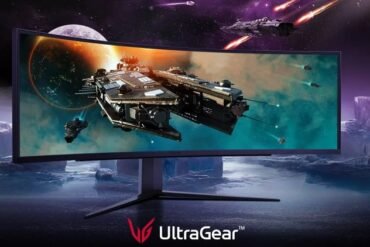RAM Overclocking: Pushing Your Memory to the Limit
Table of Contents
Introduction: Understanding RAM Overclocking
When it comes to optimizing your computer’s performance, overclocking your RAM can be a game-changer. RAM, or Random Access Memory, plays a crucial role in your system’s overall speed and responsiveness. By overclocking your RAM, you can push its limits and achieve higher speeds than what it was originally designed for.
RAM overclocking involves adjusting the frequency and timings of your memory modules to run at faster speeds. This process can provide a significant boost in your system’s performance, particularly in tasks that are memory-intensive, such as gaming, video editing, and 3D rendering.
However, before diving into the world of RAM overclocking, it is essential to understand the potential risks and benefits involved. Overclocking can put additional stress on your RAM modules, which may lead to instability or even permanent damage if not done correctly.
That being said, when done properly, RAM overclocking can yield impressive results. The increased memory bandwidth allows for faster data transfer between your RAM and other components, resulting in improved overall system performance. It can also lead to quicker load times, smoother multitasking, and enhanced gaming experiences.
Before you start overclocking your RAM, there are a few key factors to consider:
- Motherboard Compatibility: Not all motherboards support RAM overclocking. Make sure to check your motherboard’s specifications and compatibility before attempting any overclocking.
- Heat Management: Overclocking generates more heat, so proper cooling is crucial. Ensure that your system has adequate airflow and consider investing in additional cooling solutions if necessary.
- Stability Testing: After overclocking, it is essential to stress-test your system to ensure stability. There are various software tools available that can help you identify any potential issues.
RAM overclocking can be a rewarding endeavor for computer enthusiasts looking to optimize their system’s performance. However, it requires careful consideration, patience, and a willingness to experiment. In the following sections, we will dive deeper into the various aspects of RAM overclocking, including frequency adjustments, timing configurations, and voltage settings, to help you push your memory to the limit.
Benefits of RAM Overclocking
RAM overclocking is the practice of increasing the clock speed of your computer’s memory beyond its default settings. While it may seem daunting to push your memory to its limits, there are several benefits to be gained from this process. Here are some of the advantages of RAM overclocking:
- Improved System Performance: One of the primary benefits of RAM overclocking is the potential for improved system performance. By increasing the clock speed of your RAM, you can enhance the overall speed and responsiveness of your computer. This can result in faster application load times, smoother multitasking, and improved gaming performance.
- Enhanced Gaming Experience: Gamers can particularly benefit from RAM overclocking. With higher clock speeds, the RAM can deliver data to the CPU and GPU more quickly, reducing lag and ensuring a more seamless gaming experience. This can lead to smoother graphics, faster frame rates, and reduced stuttering in demanding games.
- Better Productivity: RAM overclocking can also enhance productivity for tasks that require significant memory bandwidth, such as video editing, 3D rendering, and data analysis. By increasing the RAM’s clock speed, you can improve the speed at which these tasks are performed, allowing for quicker rendering times and smoother workflow.
- Cost-Effective Performance Boost: Overclocking your RAM can provide a cost-effective way to boost your computer’s performance without having to invest in additional hardware. By maximizing the potential of your existing memory, you can achieve performance gains similar to those obtained by purchasing higher-speed RAM modules.
- Customization and Flexibility: RAM overclocking offers the opportunity for customization and flexibility. With manual control over the RAM settings, you can fine-tune the clock speed and timings to suit your specific needs. This level of control allows you to optimize your system for different tasks, from gaming to content creation.
It is important to note that RAM overclocking should be done with caution, as pushing the memory too far beyond its limits can result in system instability or even damage. Make sure to educate yourself on proper overclocking techniques and monitor your system’s temperatures to ensure it remains within safe limits. With proper care, RAM overclocking can unlock the full potential of your computer’s memory, delivering improved performance and a more satisfying computing experience.
Factors to Consider for Successful RAM Overclocking
RAM overclocking refers to the process of increasing the operating speed of your computer’s RAM beyond its default specifications. This can lead to improved system performance and faster data transfer rates. However, it is important to approach RAM overclocking with caution, as it can also lead to instability and system crashes if not done properly. Here are some key factors to consider for successful RAM overclocking:
- Compatibility: Before attempting any RAM overclocking, it is crucial to ensure that your RAM modules are compatible with your motherboard and processor. Different generations of RAM and motherboards may have different compatibility requirements, so it is important to check the specifications of your hardware.
- Cooling: Overclocking generates additional heat, so proper cooling is essential to prevent overheating and potential damage to your RAM modules. Consider investing in adequate cooling solutions, such as additional fans or liquid cooling, to maintain optimal temperatures during overclocking.
- Voltage: Increasing the voltage supplied to your RAM modules can help stabilize higher overclocking speeds. However, it is important to be cautious when adjusting voltage settings, as excessive voltage can also damage your RAM. Incrementally increase the voltage while closely monitoring system stability and temperatures.
- Timing and Latency: RAM timings and latency settings play a crucial role in overclocking. Lowering these settings can improve the overall performance of your RAM, but finding the right balance is important to maintain stability. Experiment with different timing and latency configurations while stress testing your system to find the optimal settings.
- Stability Testing: After making any changes to your RAM overclocking settings, it is crucial to thoroughly test the stability of your system. Use software tools like Memtest86 or Prime95 to stress test your RAM and check for any errors or crashes. If instability occurs, reevaluate your overclocking settings and make necessary adjustments.
RAM overclocking can be a rewarding endeavor, providing a significant boost in system performance. However, it is important to approach it with caution and follow these factors to ensure successful overclocking without compromising system stability. Remember to always back up your data and proceed with caution when making changes to your computer’s hardware settings.
Common Mistakes to Avoid in RAM Overclocking
RAM overclocking can significantly enhance your computer’s performance by pushing your memory to its limit. However, it is crucial to approach this process with caution and avoid common mistakes that could potentially damage your RAM or system. Here are some key mistakes to avoid in RAM overclocking:
- Insufficient cooling: Overclocking generates more heat, and if your RAM is not adequately cooled, it can lead to overheating and instability. Make sure you have sufficient cooling solutions, such as fans or liquid cooling, in place before attempting to overclock your RAM.
- Overclocking beyond safe limits: Pushing your RAM beyond its safe limits can cause instability, crashes, or even permanent damage. It is essential to research and understand the safe limits of your specific RAM model before attempting any overclocking. Always start with conservative overclocking settings and gradually increase them while monitoring stability.
- Ignoring voltage requirements: Increasing the voltage to your RAM can help with stability when overclocking. However, exceeding the recommended voltage limits can lead to overheating and potential damage. Be sure to check the manufacturer’s guidelines and never exceed the recommended voltage for your RAM.
- Not stress testing: After overclocking your RAM, it is crucial to stress test it to ensure stability and reliability. Skipping this step might result in system crashes or data corruption. Utilize stress testing tools like Memtest86 or Prime95 to validate the stability of your overclocked RAM.
- Not updating BIOS: Outdated BIOS versions may not support or optimize RAM overclocking. It is recommended to update your motherboard’s BIOS to the latest version before attempting any RAM overclocking. Check your motherboard manufacturer’s website for the latest BIOS updates.
- Ignoring compatibility: Not all RAM modules are created equal, and not all motherboards support high-frequency RAM overclocking. Ensure that your RAM modules are compatible with your motherboard and that it can handle the desired overclocking frequency before proceeding.
By avoiding these common mistakes, you can achieve successful RAM overclocking without compromising the stability and longevity of your system. Remember to research, proceed cautiously, and always prioritize the safety and functionality of your hardware.
Advanced Techniques for Optimal RAM Overclocking
When it comes to pushing your memory to the limit, there are several advanced techniques that can help you achieve optimal RAM overclocking. These techniques require a good understanding of the hardware and software involved, as well as careful monitoring and testing. Here are some key methods to consider:
- Timing Adjustments: Fine-tuning the timings of your RAM modules can greatly improve performance. Experiment with adjusting the CAS latency (CL), tRCD, tRP, and tRAS values to find the sweet spot for your specific RAM modules.
- Voltage Tweaking: Increasing the voltage supplied to your RAM modules can provide more stability at higher frequencies. However, be cautious when applying higher voltages, as excessive heat and power draw can damage the modules. Always monitor temperatures and stability during testing.
- Memory Strap Selection: Memory straps determine the relationship between the memory frequency and the front-side bus (FSB) frequency. Choosing the appropriate strap can help achieve higher memory frequencies without impacting system stability.
- Subtiming Adjustments: Beyond the main timings, there are several subtimings that can be adjusted to fine-tune performance. These include tRC, tRFC, tWR, and tWTR. Experiment with these subtimings to optimize performance for your specific use case.
- Cooling Solutions: As overclocking generates additional heat, it’s important to ensure proper cooling for your RAM modules. Consider using heat sinks, fans, or even liquid cooling solutions to maintain optimal temperatures and prevent overheating.
Remember, overclocking is not without risks. It may void warranties, and improper settings can lead to system instability or damage. Always proceed with caution, take note of the manufacturer’s recommendations, and thoroughly test your system for stability after any changes. Additionally, keep in mind that each system and RAM module combination is unique, so what works for one setup may not work for another.
By employing these advanced techniques and being diligent in your testing and monitoring, you can push your memory to its limits and achieve optimal RAM overclocking performance.

























